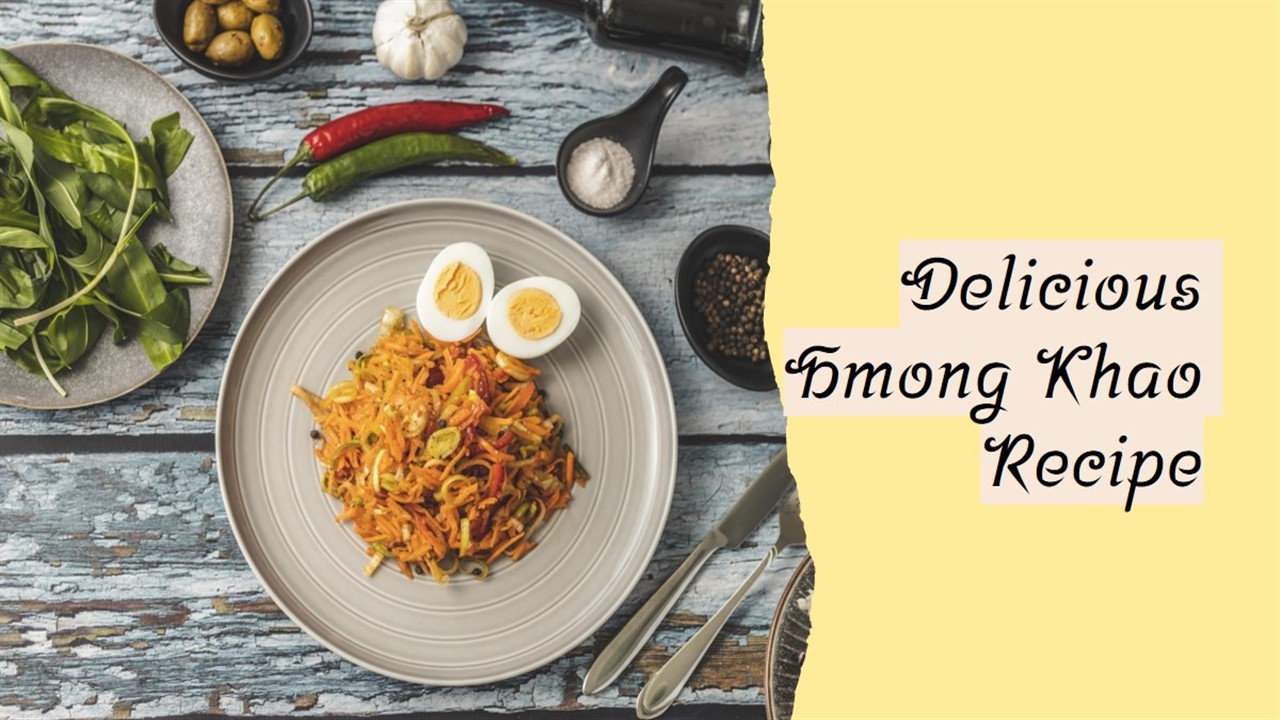Welcome to a culinary adventure steeped in tradition and flavor—exploring the delightful Hmong Khao Poon recipe. If you’re eager to delve into the intricacies of this beloved dish and learn how to prepare it from scratch, you’re in for a treat. This article will guide you through the steps to create a vibrant and aromatic bowl of Hmong Khao Poon that celebrates the essence of Hmong cuisine.
Unveiling the Essence of Hmong Khao Poon
Before we delve into the recipe, let’s uncover what makes Hmong Khao Poon so special. This traditional dish is known for its rich coconut curry broth, fragrant herbs, and tender meats or tofu, offering a harmonious blend of flavors and textures that delight the senses.
Key Ingredients for Hmong Khao Poon
- Rice Vermicelli Noodles: Thin, delicate noodles that absorb the flavors of the broth.
- Coconut Milk: Provides a creamy base for the broth, imparting richness and depth.
- Protein: Typically chicken, pork, or tofu, offering a hearty component to the dish.
- Aromatic Herbs: Lemongrass, galangal, and kaffir lime leaves infuse the broth with aromatic notes.
- Chili Paste: Adds heat and depth of flavor, balancing the sweetness of coconut milk.
- Vegetables: Bean sprouts, cilantro, and green onions provide freshness and crunch.
Preparing Your Ingredients
Begin by gathering all fresh ingredients and preparing them as specified in the recipe. Slice the proteins into bite-sized pieces, chop the herbs finely, and soak the rice vermicelli noodles according to package instructions.
Step-by-Step Guide to Crafting Hmong Khao Poon
Now, let’s embark on the journey to recreate the authentic flavors of Hmong Khao Poon in your own kitchen. Follow these steps closely to achieve a bowl of comforting and aromatic soup that reflects the heart of Hmong cuisine.
Making the Coconut Curry Broth
Start by heating a large pot over medium heat and adding a spoonful of chili paste. Stir-fry briefly until fragrant, then add coconut milk and stir to combine. Add lemongrass, galangal, and kaffir lime leaves, bringing the broth to a gentle simmer.
Cooking the Proteins and Vegetables
Add the sliced protein of your choice to the simmering broth and cook until cooked through. If using tofu, add it towards the end to prevent it from breaking apart. Incorporate vegetables like bean sprouts and simmer for a few more minutes until tender-crisp.
Seasoning and Adjusting Flavors
Taste the broth and adjust seasoning with fish sauce, sugar, or more chili paste as needed to achieve a balance of sweet, salty, and spicy flavors. Remove the lemongrass stalks and kaffir lime leaves before serving.
Assembling the Khao Poon
Divide the soaked rice vermicelli noodles among serving bowls. Ladle the hot coconut curry broth over the noodles, ensuring each bowl gets a generous amount of protein and vegetables. Garnish with chopped cilantro, green onions, and a squeeze of fresh lime juice.
Serving and Enjoying Hmong Khao Poon
Serve the Hmong Khao Poon hot, allowing guests to customize their bowls with additional herbs, chili paste, or lime juice according to their preferences. Enjoy the aromatic flavors and comforting warmth of this traditional dish.
Tips for Serving and Pairing
Pair your Hmong Khao Poon with a side of fresh herbs, lime wedges, and crispy fried shallots for added texture and flavor. A cool glass of iced tea or a light lager beer complements the dish well, refreshing the palate between bites.
Conclusion: Embrace the Heart of Hmong Cuisine
In conclusion, Hmong Khao Poon is more than just a dish—it’s a celebration of flavors, traditions, and community. By following these steps and using fresh, authentic ingredients, you can recreate this beloved soup in your own kitchen and experience the richness of Hmong cuisine.
For more ideas, recipes, and cooking tips and tricks, please visit us at Ray’s Painting.
Frequently Asked Questions About Hmong Khao Poon Recipe
Can I Make Hmong Khao Poon Vegetarian?
Yes, you can substitute tofu or tempeh for the meat and use vegetable broth instead of chicken or pork broth to create a delicious vegetarian version of Hmong Khao Poon.
How Spicy Is Hmong Khao Poon?
The spiciness can vary depending on the amount of chili paste used. Start with a small amount and adjust according to your preference for heat.
Can I Freeze Leftover Hmong Khao Poon?
While it’s best enjoyed fresh, you can freeze leftover Hmong Khao Poon in airtight containers for up to 1 month. Thaw in the refrigerator overnight and reheat gently on the stove before serving.
What Can I Substitute for Kaffir Lime Leaves?
If you can’t find kaffir lime leaves, you can use a combination of lime zest and bay leaves as a substitute, though the flavor won’t be exactly the same.
Where Can I Find Ingredients for Hmong Khao Poon?
Visit your local Asian grocery store or market to find specialized ingredients like lemongrass, galangal, kaffir lime leaves, and rice vermicelli noodles used in Hmong Khao Poon.
Now armed with the knowledge and steps to prepare Hmong Khao Poon, enjoy the process of creating this comforting and aromatic dish for yourself and your loved ones!

